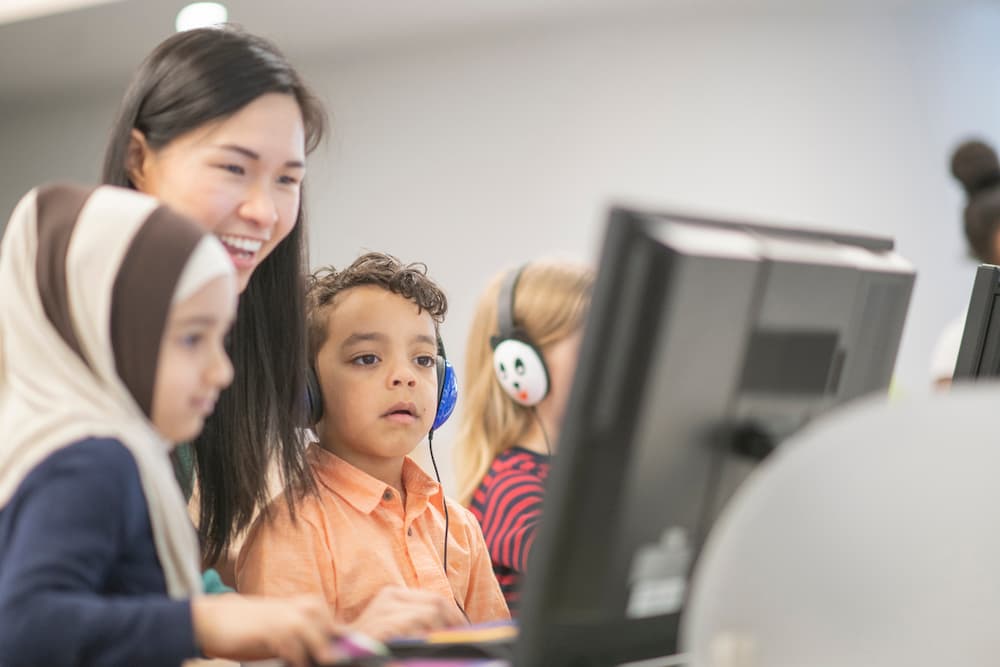
Funding in government schools – Disability Inclusion
A range of support is available to meet the needs of students with disability.
Schools are required to put in place reasonable adjustments to ensure all students with disability can participate in all learning activities. For some students with disability, extra funding for schools is available.
Disability Inclusion and Program for Students with Disabilities
The Victorian Government has announced a new way of funding students with disability called Disability Inclusion. Over the next few years it will replace the Program for Students with Disabilities (PSD).
Timeframe for the roll-out of Disability Inclusion
This is the timeframe when school areas are moving to Disability Inclusion.
Disability Inclusion rollout
| 2021 | 2022 | 2023 | 2024 | 2025 |
|---|---|---|---|---|
| Bayside Peninsula | Outer Eastern Melbourne | Inner Gippsland | North Eastern Melbourne | Hume Moreland |
| Barwon | Central Highlands | Ovens Murray | Southern Melbourne | Outer Gippsland |
| Loddon Campaspe | Mallee | Western Melbourne | Brimbank Melton | Wimmera South West |
| Goulburn | Inner Eastern Melbourne |
What the changes mean for your child
If your child’s school is in an area that has moved across to Disability Inclusion they maybe eligible for support. This fact sheet has information about how to apply and how the funding can be used.
If your child’s school area has not moved across to Disability Inclusion, your child may be eligible for support through the Program for Students with Disabilities (PSD).
You can read more about the PSD in our fact sheet Funding in government schools – Program for Students with Disabilities
If your child already receives PSD funding they will continue to receive this until their school transitions to Disability Inclusion. Once their school transitions to Disability Inclusion the school will contact you to start the process.
Eligibility for Disability Inclusion funding
Disability Inclusion funding for an individual student is also called Tier 3 student level funding.
Students do not need a formal disability diagnosis to get Disability Inclusion funding.
Eligible students will need substantial or extensive adjustments to be made by the school because the student has support needs in one or more of the following areas:
- Physical
- Cognitive
- Sensory
- Social/emotional
How funding can be used
Disability Inclusion funding can be used to pay for resources such as:
- Additional teaching staff
- Specialist staff
- Professional development for teachers
- Education support staff
The Principal will work with the Student Support Group to decide how the funding will be spent.
Application process
Your child’s school is responsible for the application for Disability Inclusion funding. The application is developed in consultation with families.
The application includes a Disability Inclusion Profile that brings together all the information about what support your child needs to learn best.
The Disability Inclusion Profile will include supporting information such as:
- A Vineland 3 assessment completed by your child’s teachers
- Reports from the specialists involved in your child’s life, such as paediatricians and therapists
- Information from your child’s current kinder or school teachers
The school may organise other assessments and will let you know what information to provide.
Disability Inclusion Profile meeting
A dedicated Disability Inclusion Profile meeting will be organised by your child’s school. An independent facilitator will run the meeting which will take approximately 90 minutes.
The meeting can include:
- The child (if appropriate)
- You as the child’s parent or carer
- A support person or advocate
- Teacher and Principal
- Other important people in your child’s life such as your child’s kinder teacher, therapist, medical professional and education support staff
- An interpreter if needed
At the meeting you can share information about your child’s goals, learning, participation, social engagement and experiences at home that are relevant to the way they learn. You can also talk about what has helped your child learn in the past.
You might want to spend some time before the meeting thinking through what would help your child at school. This document can help you record your ideas before the meeting:
Disability Inclusion Profile Parent Voice Tool
Your child can also talk about what helps them learn. This document can help your child record their ideas before the meeting:
Disability Inclusion Profile Student Voice Tool
After the Disability Inclusion Profile meeting
The independent facilitator will finalise your child’s Disability Inclusion Profile following the meeting. The facilitator may request additional information from the school.
The Disability Inclusion Profile will be used to decide the level of funding needed to support your child at school. Completing a Disability Inclusion Profile does not guarantee that your child’s school will receive individual funding to support your child.
Even if your school does not receive individual funding, completing a Profile is a valuable way to share information and to help the school understand your child’s needs and aspirations, and how they may be supported to learn at school.
You will be provided with a copy of your child’s Disability Inclusion Profile in the weeks following the meeting. The school will let you know the outcome of the funding decision.
You and your child’s school will continue to meet regularly to discuss your child’s learning and support needs. This is called a Student Support Group meeting.
At Student Support Group meetings you and your child’s teachers will review your child’s Disability Profile and develop an Individual Education Plan and other plans such as a Behaviour Support Plan, if needed.
Appealing, reappraisals and reviewing a Disability Inclusion Profile
Schools can appeal the funding outcome of a Disability Inclusion Profile on the following grounds:
- Supporting information was not provided in the student’s Profile
- Procedural deficiencies in the profile process
It is recommended schools contact their Regional Disability Coordinator to discuss any appeal that is being considered. An appeal must be lodged within 15 school days of receipt of the Profile Report.
If your child’s support needs have changed a reappraisal can be submitted.
The Disability Inclusion Profile will include a recommended review date. It will generally be undertaken every two to four years or as part of major transitions.
Useful links
Disability Inclusion information with animated video
Disability Inclusion Profile
Disability Inclusion Policy
Disability Inclusion appeals, reappraisals and review



